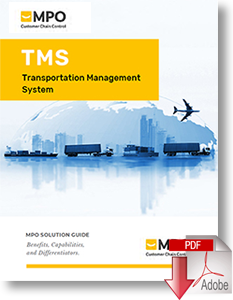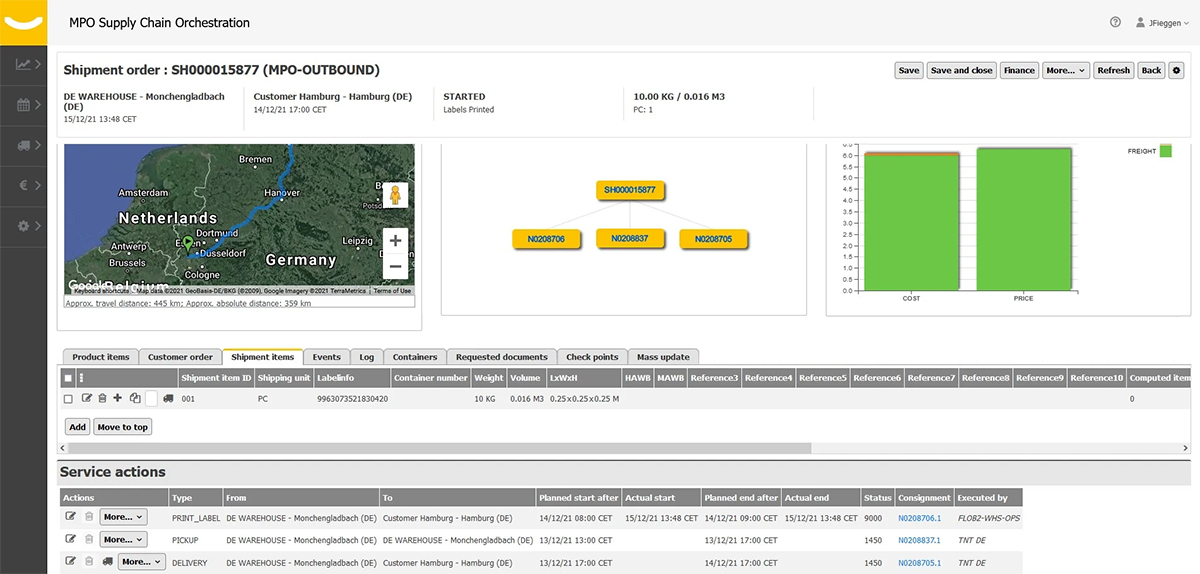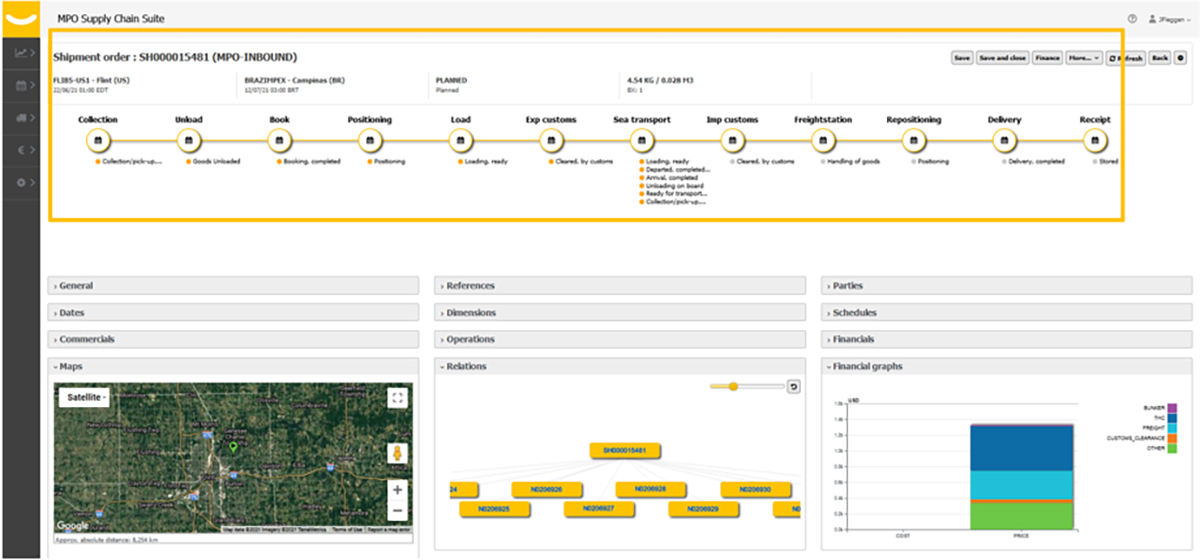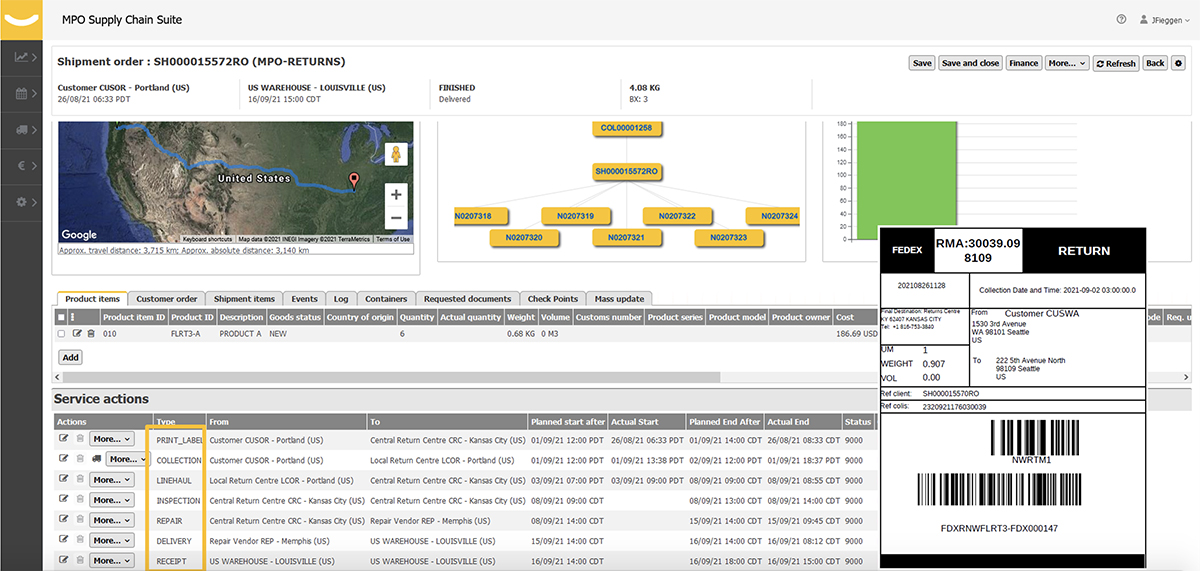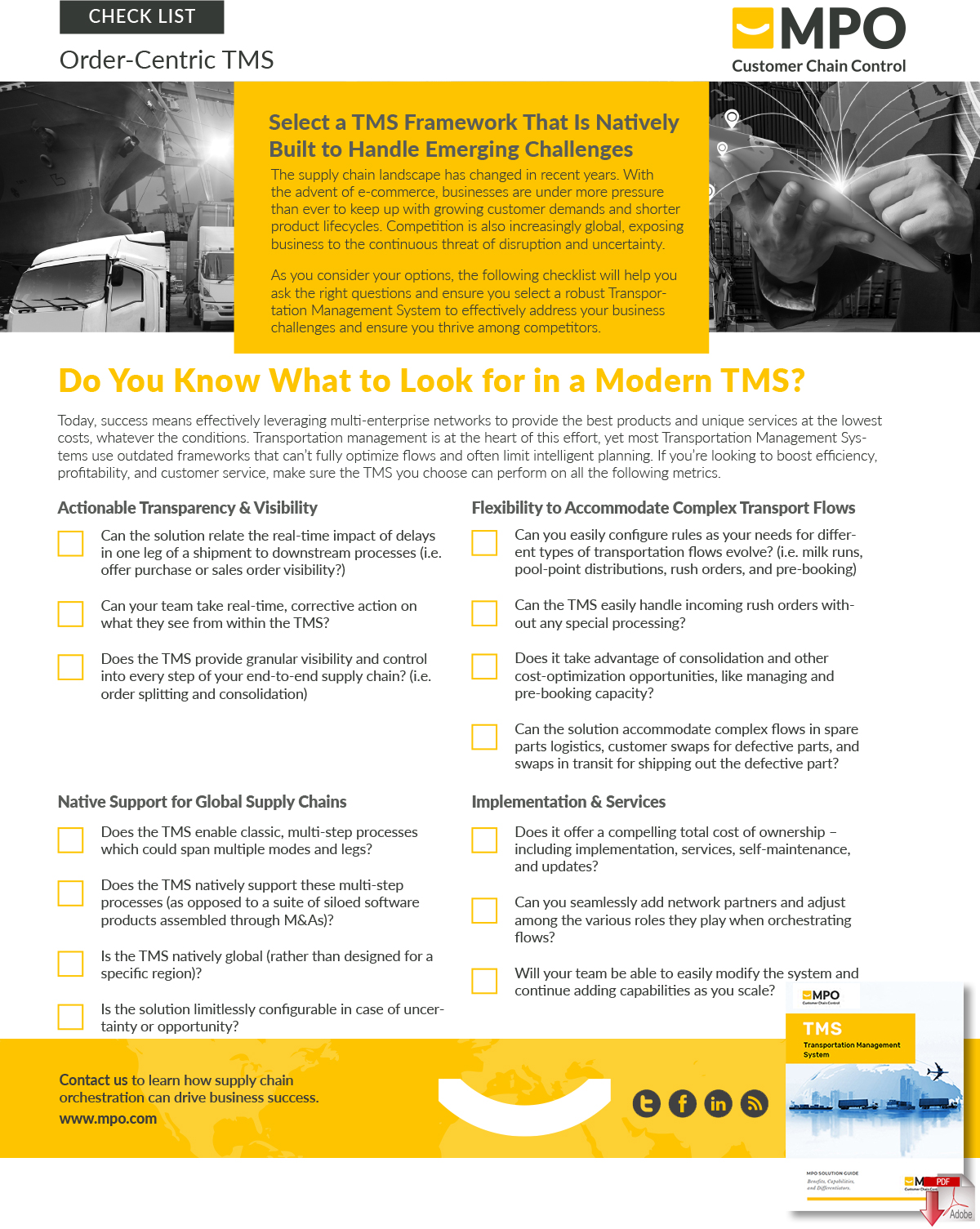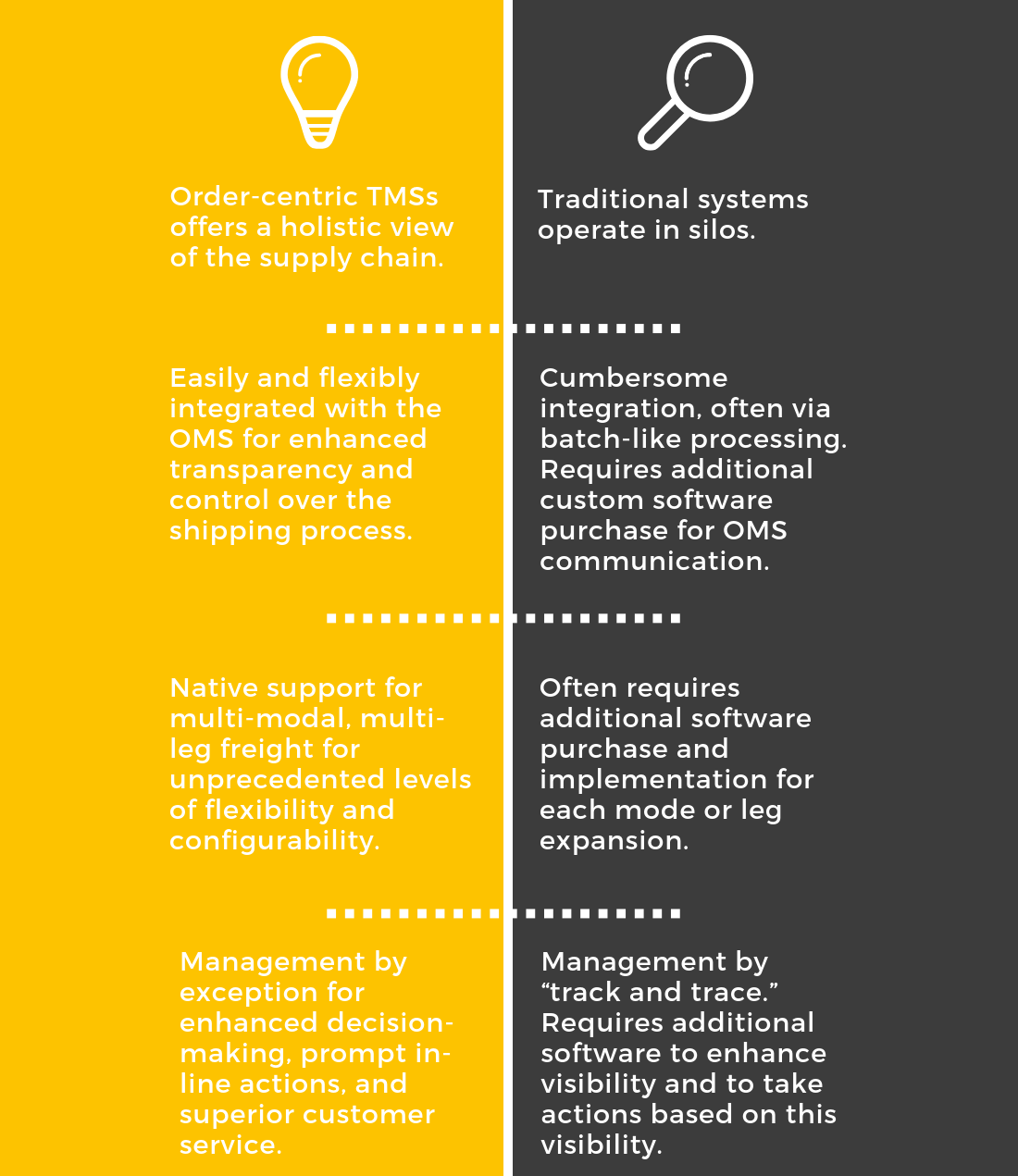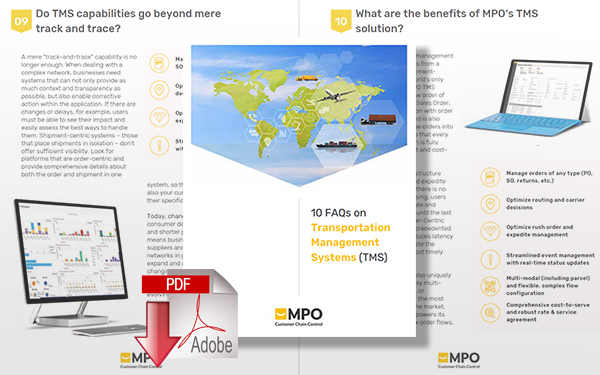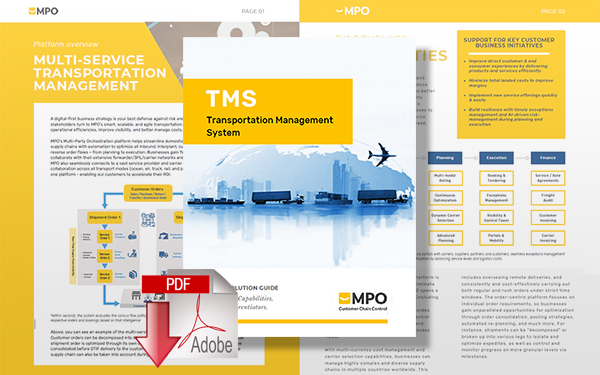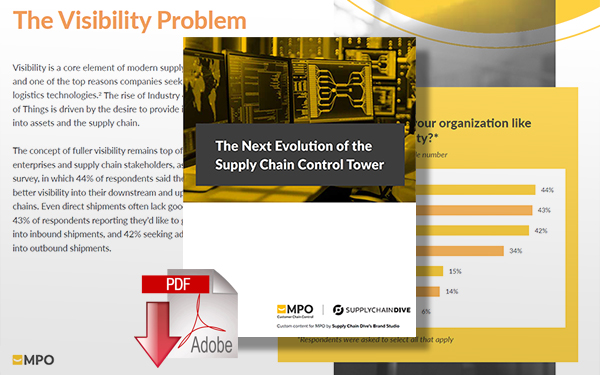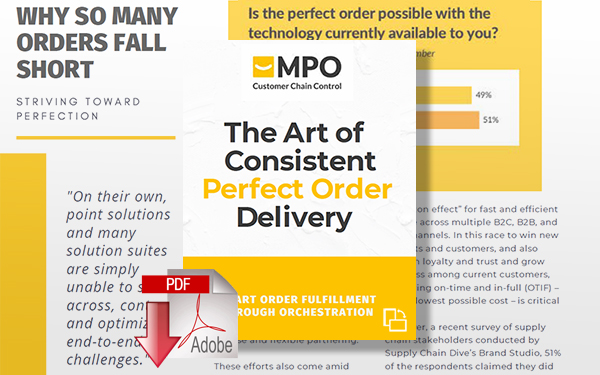3 Ways Transportation Management Systems Have Evolved

In this article, we detail some of the key ways transportation management systems, tms has developed to provide greater intelligence and optimization across the multi-party ecosystem, improving flexibility, agility, and resiliency.
Transportation Management System
Transportation management is a key component of supply chain optimization, especially as global networks become increasingly broad and complex, involving multiple origins, destinations, and modes of transport.
Today’s transportation management system (TMS) is highly integrated and data-driven to meet challenges head-on and provide greater control and insight across the network - from manufacturers and distributors to shippers and logistics service providers.
Transportation Management System (TMS Solution Guide)
Enhance end-to-end visibility and control to make more strategic decisions that improve operational excellence and the customer experience. Optimize service levels and costs with a solution that goes beyond transport and logistics.
Here are some of the key ways the solution has developed to provide greater intelligence and optimization across the multi-party ecosystem, improving flexibility, agility, and resiliency.
Access this brief TMS guide for the benefits, capabilities, and key differentiators - including an Order-Centric TMS checklist.
How Transportation Management Systems Have Evolved
1. Small Parcel Shipping (SPS) Integration
Looking back at logistics and supply chain technologies, it wasn’t until very recently that parcels (small packs) became integrated into select transportation management systems.
In the 2000s, TMS focused on over-the-road (OTR) with less-than-truckload (LTL) and full truckload (TL) as the primary modes of transport, excluding ocean, air, rail, and intermodal options.
If a client wanted to integrate other modes of transportation, such as a parcel, it would require a separate module, making the project time-consuming and expensive.
These parcel shipment integrations create a complex systems landscape for the organization and necessitate workarounds that used to require additional labor.
Changes to the carrier or service level, for example, had to be managed manually, and due to the complexity of multi-modal transport, this increased the risk of delays or overcharges.
Furthermore, customer service teams were challenged to provide an accurate freight quote to their customers which impacted customer retention in some cases.
Today’s transportation management software uses advancements in web service APIs that enable companies to optimize and automate parcel management.
As a next-generation TMS, the solution addresses these concerns by offering accurate and instantaneous rate quotes with multiple delivery options, integrated label printing, tracking, and invoicing – all with the goal of serving customers better.
2. Support for Inbound Purchase Order Management
In 2021, researchers at Auburn University’s Center for Supply Chain Innovation presented the results of the third annual installment of “Logistics 2030 - Navigating a Disruptive Decade.” In this study, 67% of survey respondents in logistics management identified sourcing flexibility as their top priority for sourcing and procurement.
Sourcing flexibility, in this context, refers to the ease and speed with which a client can change suppliers, and it’s readily apparent why this is the new focus for transportation management: Global-scale supply chain disruptions were abundant in 2021. The composite Purchasing Managers Index (PMI) shows evidence of increased volatility relative to previous years; the current actual reading for January, for example, is 50.80. Among global PMI suppliers, the delivery times index also slumped in 2021, reaching as low as 34.8 points in October.
These results demonstrate shifting priorities for inbound purchasing and the ever-growing importance of linking transportation management, as participants in the study previously reported cost management as their top concern.
New transportation management technology supports inbound purchase order management by simplifying sourcing decisions with real-time data and API integration that can be centralized across partners, eliminating the need to toggle between multiple carrier/forwarder portals and communication channels. Some even offer in-app solutions, providing clear recommendations based on centralized data. With an order-centric approach and cross-supplier visibility, clients can focus on end-to-end flow optimization and ensure continuity of supply.
3. Returns Management Optimization
When a product is returned and an order travels upstream, new layers of complexity ensue. The operation may involve, for example, last-mile deliveries and multiple business partners and outsourcing services like repair, repackaging, refurbishment, and salvage. A TMS can now support returns management and reverse logistics by consolidating shipments and optimizing carrier selection and mode, all while accounting for logistical constraints and service level agreements (SLAs) that vary by order.
Platforms that provide omnichannel visibility and integrate reverse logistics into their overall order orchestration capabilities help organizations reduce the turnaround time, mitigate costs, and manage outsourcing relationships, even if the order flow is complex and involves multi-stop and multi-leg selections. A transportation management system must also be configurable for industries that may operate within highly specific parameters, such as would be the case for transporting large equipment or hazardous materials.
The increased capacity to handle returns that may be afforded through an efficient transportation management system is also beneficial because returns and refurbishment orders have climbed over the last two years. Due to several compounding factors, including the rise of e-retail, consumer pressure, and widespread electronics and appliance usage, the demand for item returns and repairs is growing.
To scale operations for returns management and succeed in an increasingly complex multi-partner ecosystem, a configurable TMS system with returns capabilities coupled with advanced analytics capabilities is key.
Why Upgrade TMS Capabilities and Order Management
Supply chain management is a constantly evolving field, and there are countless variables that can affect global, multi-party transport and logistics management. Examples of disruption over the last year abound, from the Omicron surge and subsequent closures to staffing shortages, container ship congestion, transport capacity issues, and recent modifications to Section 232 of the Trade Expansion Act of 1962.
Transportation management systems can help mitigate risk and build resilience when exceptions occur that threaten your bottom line. Expanded service levels and communication between silos also make it possible to improve flows that have become segmented. With integrated Transportation and order management (or an order-centric TMS), businesses can provide high service levels and a seamless customer experience.
The MPO Transportation Management System can help you embrace supply chain complexity and truly build resilience. As a multi-modal, holistic solution, businesses can continuously optimize inventory, orders, and transport across inbound, outbound, and reverse flows, with cost-to-serve calculations that go beyond transportation management.
Learn more about how the platform can support your digital transformation initiatives by downloading a copy of the transportation management system solution guide or by reaching out to [email protected] or requesting a demo today.
Comparing 2 Types of TMS - Order-Centric versus Traditional
Related Resources
10 FAQs on Transportation Management System (TMS)
Use this FAQ to explore the most common questions we hear about transportation management systems (TMS) to make the best, most informed decision for your business needs and goals. Download Now!
Transportation Management System Solution Guide
Access this brief guide to MPO's Transportation Management Solution, benefits, capabilities, and differentiators - including an Order-Centric TMS checklist. Download Now!
The Next Evolution of the Supply Chain Control Tower
This white paper explores why visibility is a core element of modern supply chain digitization, and a top reason to implement logistics technologies in your supply chain. Download Now!
The Art of Consistent Perfect Order Delivery
This white paper defines what a perfect order is and details the technology that helps leaders achieve smart order fulfillment through optimized supply chain orchestration. Download Now!
More Resources from MPO
Related Article: 6 Critical Challenges in Returns Management & Reverse Logistics that Unlocks Incredible Potential
Article Topics
MPO News & Resources
TMS+ Go Beyond Transport to Optimize Cost, Service, & Resiliency Multi-Party Orchestration Platform When It Comes to Digital Transformation You May Not Be Doing What You Think How Chief Operating Officers are Achieving Results with Supply Chain Software SPARK Matrix Transportation Management System Software Analyst Report Top Trends Driving Change and Technology Strategy Within Logistics & Transportation Management 5 Key Steps for Optimizing your Last Mile Delivery More MPOLatest in Transportation
Is There a Next Generation of Truckers? Data Reveals Grim Outlook A Look at Baltimore’s Key Bridge Collapse—One Month Later Baltimore Continues Bridge Recovery With Opening of New Channel How Shippers Can Prep for Hurricane Season UPS Struggles in First Quarter With Steep Earnings Decline FedEx Announces Plans to Shut Down Four Facilities The Two Most Important Factors in Last-Mile Delivery More Transportation

